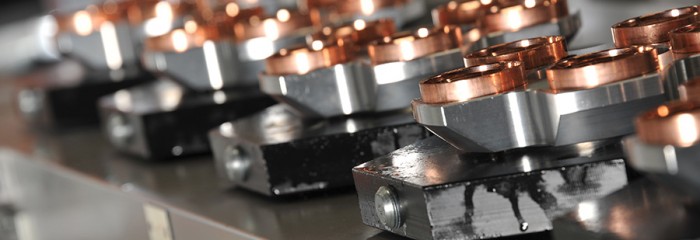
30 Mar What is the total precision engineering solution?
Success in manufacturing is about much more than simply investment in the latest machine tools or the ability to produce to tight tolerances. Delivering high productivity, greater value and consistent quality calls for an integrated approach – in other words, it requires total precision engineering.
As manufacturers, especially in aerospace and automotive, seek to achieve cost reductions and improve efficiency there is an increasing move towards this solution. Here are the key elements of total precision engineering:
Design
To maximise quality and productivity, a component must be designed to suit the requirements of the chosen production process, the machinery involved and the capabilities of the supplier. Failure to consider this can lead to problems and costs later in the process.
Materials
The grade and quality of the material selected for a component can have a significant impact on both in-service performance and the cost and complexity of manufacture. Working with an experienced specialist, who has extensive expertise of working with different materials, can help to ensure quality and consistency.
Process design
The manufacture of most components involves multiple process steps. The ultimate precision of the final part depends on the design and execution of those individual process steps, but also on the interactions between them. Bringing all those process steps under one roof at a single supplier simplifies those trade-offs. It also creates clear accountability for part quality and delivery performance.
Tooling
Proper tooling is essential for delivering a robust component manufacturing process. In cold forming, for instance, poorly designed or insufficiently rigid tools can lead to problems with part geometry and tolerances. Poor tools wear out faster too, increasing the probability of quality deviations in production and driving up costs.
Although tool design and production remains a specialised skill, the process and time required has been significantly improved through the latest computer simulation techniques, which evaluate the performance of the manufacturing process in a virtual environment before the metal for any tool is cut.
Quality systems
Process details matter, and they don’t happen by chance. Having the correct quality systems in place is crucial. At Dawson Shanahan, we use proven quality management approaches, such as failure mode and effects analysis (FMEA), when we design the process for any component. That helps us to understand what can go wrong in production, where it can go wrong and the probability of issues occurring, and thus to engineer-out any potential problems from the start.
Then we put measures in place to prevent deviations where possible, along with appropriate checks to ensure defective parts are never carried forward to subsequent processes, or delivered to the customer.
Downstream activities
In total precision engineering, thinking beyond individual component manufacturing stages can enable efficiency improvements. Our engineers are always looking for ways we can help our customers simplify their processes, eliminate waste and achieve more value. This can, for example, include additional in-house manufacturing processes, such as heat treatment or laser marking.
Through-life improvements
The improvement opportunities don’t stop when production starts. Issues and ideas can emerge as further experience of the components is gained during the manufacturing process, and as the customer learns more about the performance of the component in use.
Working with a subcontractor that can understand and integrate all the above elements can help you find better ways to meet your current precision manufacturing requirements, unlock hidden sources of additional value, and prepare you to meet new challenges as they emerge.


